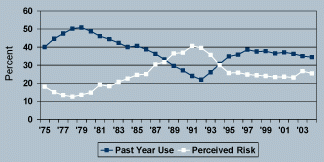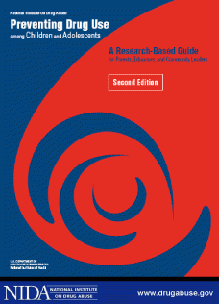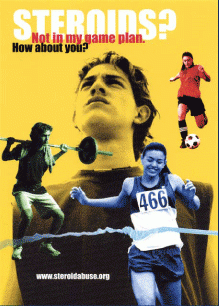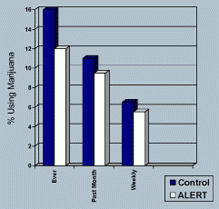Preventing Drug Abuse is Our Most Effective Approach to Combating the Nation's Drug Problem
Research has taught us much about what does and does not work in drug abuse prevention at the individual, family, and community levels.
A set of science-based general principles of effective drug abuse prevention has emerged from NIDA-supported research. Preventing Drug Use Among Children and Adolescents has come to be known by community leaders throughout the Nation as the “Red Book.” Preventing Drug Abuse is Our Most Effective Approach to Combating the Nation's Drug Problem
Results of the Adolescents Training and Learning to Avoid Steroids (ATLAS) Program
Compared to Controls, Participants Reported:
- Lower intent to use at 1- year follow-up
- Lower use of over-the- counter sports supplements at 1-year follow-up
- Higher levels of self-esteem
- Greater knowledge of steroid effects
Source: Goldberg et al., 19961
Elementary School Programs that Emphasize Social Development Reduce Risky Sexual Behaviors
Promoting Academic Success, Social Competence, and Bonding to School Can Reduce Risky Behaviors
One intervention that focused on social development led to:
- Fewer sexual partners
- More condom use
- For females, being less likely to have a baby by age 21
Source: Lonczak et al., 2002 2
Youth development programs targeted at elementary school students may have the potential to help youth acquire healthy behaviors that can be sustained across their life spans.
School-Based Prevention Programs Can Reduce Drug Use
- Project ALERT reduced the proportion of new users of cigarettes and marijuana by 19% and 24%, respectively
- Marijuana initiation rates were 38% lower for ALERT students who had not tried cigarettes or marijuana at the start of the study
Tailoring prevention programs to specific populations is critical.
As the Level of Perceived Risk Increases, the Rate of Drug Abuse Drops
 Source: Johnston et al., 20045
Source: Johnston et al., 20045Prevention messages can make a difference. They can convey information to change attitudes about drug use.
Targeted Media Campaigns Can Significantly Impact Public Health Behavior
- One campaign targeted to sensation seeking adolescents resulted in:
- An estimated 26.7% drop in the use of marijuana
- Persistent effects after the campaign concluded
Source: Palmgreen et al., 20014





